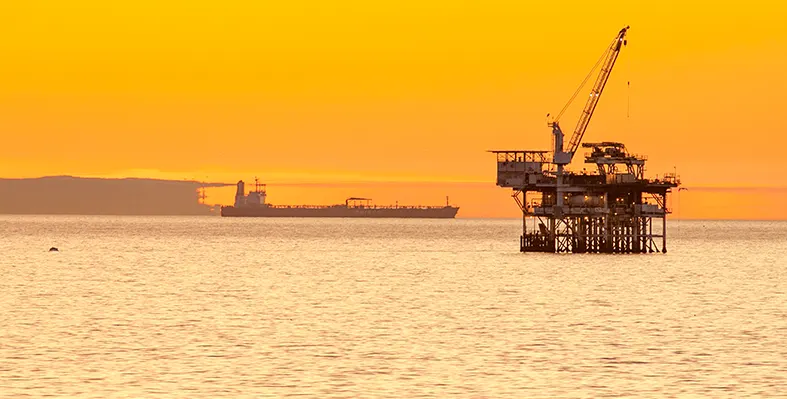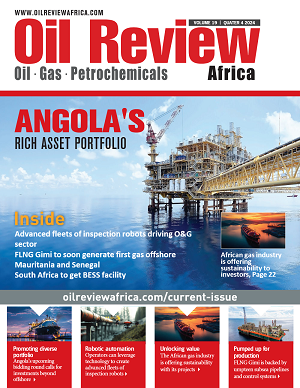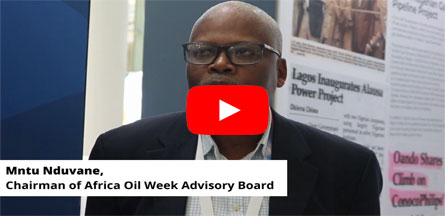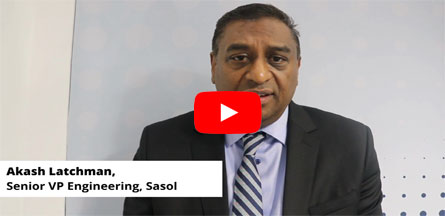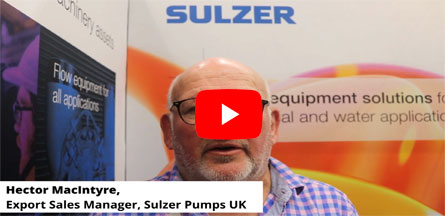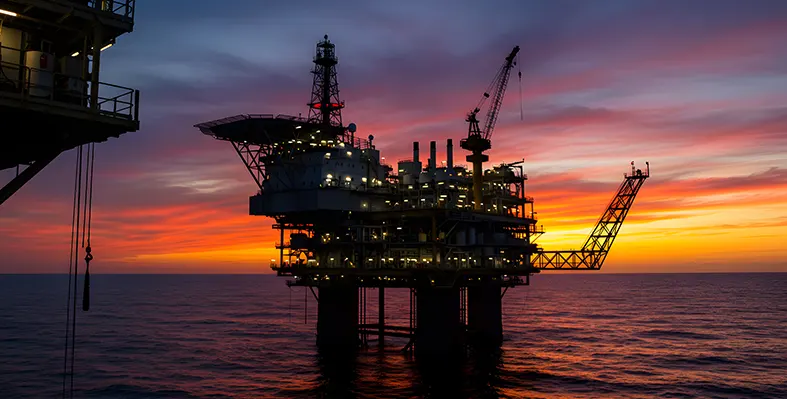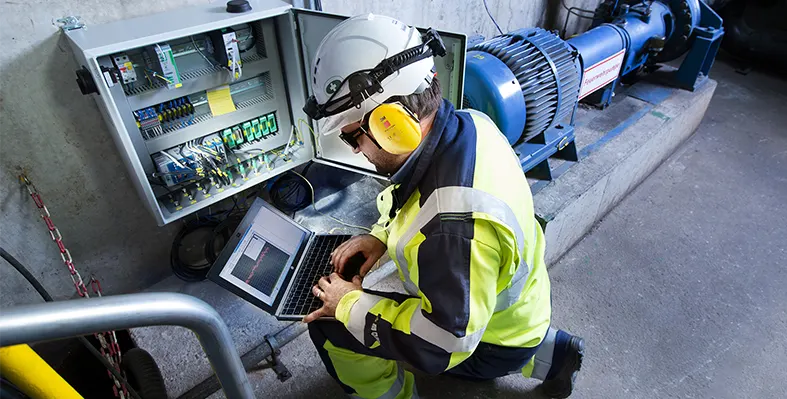In The Spotlight
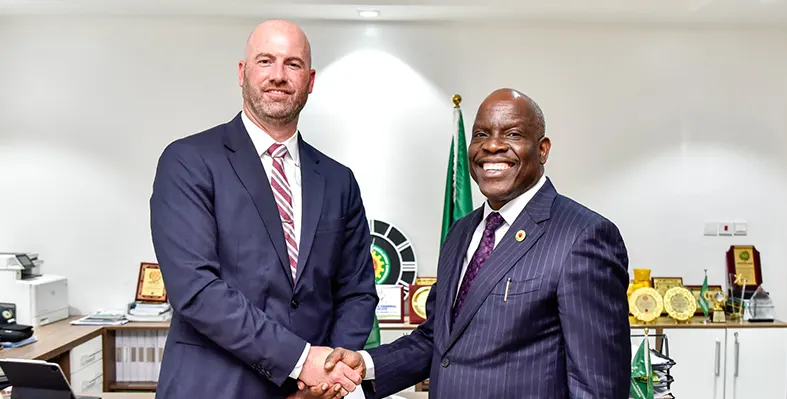
Shane Harris, ExxonMobil’s managing director in Nigeria paid a courtesy visit to the chief executive of NUPRC, Gbenga Komolafe. (Image source: NUPRC)
In a clear move for startegic expansion, ExxonMobil has confirmed the initiation of planned investments of US$1.5bn for deepwater exploration and development in Nigeria
The announcement was made by Shane Harris, ExxonMobil’s managing director in Nigeria, during a courtesy visit to the chief executive of the Nigerian Upstream Petroleum Regulatory Commission (NUPRC), Gbenga Komolafe.
Expected to be implemented between Q2 2025-2027, the initiative will include production revitalisation from the Usan field, several funding approvals, and a field development plan approval during the late Q3 2025. Other activities include accelerated development of the Owowo and Erha fields, among others.
Emphasising the importance of collaboration between investors and regulators in meeting Nigeria's production optimisation goals, Komolafe said, “The Commission is committed to the implementation of Section 109 of the PIA which addresses the subject of willing buyer, willing seller and we urge producers to comply with the Domestic Crude Supply Obligation.”

Eni-led Congo LNG project remains a part of Congo's gas monetisation initiatives. (Image source: Adobe Stock)
The Republic of Congo will be advancing its gas agenda at Invest in African Energy (IAE) 2025 Forum in Paris during the session, 'Monetising Congo’s Gas Opportunities'
Moderated by Geraud Moussarie, managing partner at Sustainable Partnerships, the session will emphasise Congo's strategy on scaling up gas production with proper infrastructure for commercialisation to supply both domestic and foreign markets. Participants comprising the session will include senior representatives from Congo’s national oil company, Societe nationale des petroles du Congo (SNPC); Rus Jiri, sales and development director Africa at Neuman & Esser, and Oumar Semega, CEO of Imperatus Energy.
With a liquefaction capacity of up to 3 mn tons per year, the Eni-led Congo LNG project remains the most impactful of the region's latest industry advances as it puts Congo on a favourable position in tapping the vast export market.
In the domestic front, the Banga Kayo onshore project, led by Wing Wah, is exemplary for its sustainable nature as it will convert flared gas into dry gas, LNG, LPG and polypropylene for commercial use. Strengthening local value chains and gas infrastructure development will drive the New Gas Code that is expected this year, besides the already-implemented Gas Master Plan.
IAE 2025 will be taking place from 13-14 May.
Rhino Resources has found good petrophysical properties minus water contact from Capricornus 1-X exploration well in Namibia’s Orange Basin
Spudded with the Noble Venturer drillship, the Lower Cretaceous target was reached at total depth, revealing 38m of net pay. Hydrocarbon samples and sidewell cores were collected through intensive wireline logging operations. The rig will now be released following temporary plugging and abandonment of the well.
A production test was also conducted across the light oil-bearing reservoir. The well achieved a surface-constrained flow rate in excess of 11,000 stb/d on a 40/64” choke. The light 37° API oil exhibited limited associated gas with less than 2% CO2 and no hydrogen sulphide. Fluid samples collected from the test will be put to laboratory studies.
The Capricornus 1-X that falls under Petroleum Exploration License 85 is operated by Rhino Resources with a working interest of 42.5%. Co-venturers are Azule Energy (42.5%), Namcor (10%), and Korres Investments (5%) – bp and Eni each hold a 50% interest in Azule Energy.
Brazzaville, Congo
With an aim to advance reach in the West Star block, US energy major Chevron has initiated talks with the Egyptian government
The area lies in the south of ExxonMobil’s major Cairo and Masry blocks in the deep offshore near the Cyprus border.
This is an addition to Chevron's earlier bid for two out of the 12 blocks that the Egyptian Natural Gas Holding Company (EGAS) had opened for investors. Chevron is awaiting finalisation of the awards in the next few months.
Following a US$5bn acquisition of Noble Energy in 2020, Chevron has been strengthening its footprint in the East Mediterranean, undeterred by the current industry turbulences.
“We are excited about our entire portfolio in the Eastern Mediterranean,” believes CEO Mike Wirth. “We have got some good exploration acreage in the offshore Egypt area that we brought to the table as well and the expectation is for some exploration wells there in the coming couple of years,” he said.
Chevron is willing to invest around US$$120mn in the West Star concession in the northeast Mediterranean following approval from the Ministry of Petroleum.
Norwegian seismic firm TGS has completed reprocessing work on data that it hopes will spur renewed interest in Angola’s forgotten deepwater Block 16
The company has announced that it had finished work on the Block 16 GeoStreamer MC3D seismic dataset in the Lower Congo Basin, in partnership with Agência Nacional de Petróleo, Gás e Biocombustíveis (ANPG).
Exploration in the deepwater Lower Congo Basin has experienced a resurgence in recent years, TGS reported, with numerous significant discoveries being made and rapidly brought on stream.
"This 3,684-sq-km rejuvenation project utilises modern depth processing workflows to deliver enhanced imaging beyond the original data, enabling detailed evaluation of deeper target plays in both post-salt and pre-salt sections,” it said in a statement.
Angola’s Block 16 has remained largely under explored since the early 2010s, however, with the most recent exploration well drilled in 2013. Until recently, publicly-known oil and gas discoveries within Block 16, in the latest dataset, were limited to the Bengo (1994) and Longa (1995) Upper Miocene finds in the northern section.
However, TGS said that a recent re-evaluation of wells in the Lower Congo Basin has identified oil recovery from Upper Miocene reservoirs in the southern part of the survey area. The survey also provides partial coverage of the field, a marginal field development opportunity currently being marketed by ANPG.
Discovered in 2003, Tchihumba contains hydrocarbon-bearing zones within Upper Miocene, Lower Miocene and Oligocene sands, with recoverable volumes estimated at approximately 136mn barrels.
Additionally, the Lumpembe-1 oil discovery on Block 15/06, drilled in 2023 and currently undergoing development studies, falls within the survey’s coverage.
“TGS is very pleased to continue our support of exploration in this region with our high-quality seismic data,” said David Hajovsky, executive vice president multi-client, TGS. “These accumulations, along with the proximity of significant neighbouring discoveries, present strong opportunities for future exploration success.”
Other West African projects TGS has completed recently include an enhancement of its Fusion 3D seismic dataset offshore Sierra Leone, focusing on the Vega prospect.
Recent discoveries in South America have intensified interest in this region, TGS stated late last year, positioning Sierra Leone as a promising new exploration frontier.
“With growing interest from international oil companies and independents, the Fusion 3D data comes at a crucial time.”
TGS also signed an agreement last year to enhance datasets in Mauritania with the Ministère du Pétrole, des Mines et de l’Énergie, strengthening its position as the sole provider of multi-client subsurface data in the country.
Read more offshore Angola news here:
Red Sky Energy signs risk service contract on Angola Block 6-24
Cabgoc's Sanha project achieves first gas offshore Angola
Sequa Petroleum to acquire interests in multiple blocks in Angola
Africa’s offshore oil and gas sector is rapidly evolving, with operators venturing into deeper waters to tap into new reserves
While these developments present exciting opportunities, they also introduce significant technical challenges – especially with testing and commissioning of the subsea equipment. With subsea umbilicals now incorporating more fiber optic cables for high-speed data transmission and control, the ability to quickly and accurately test these fibres is more crucial than ever. To support the testing of the fibre optics in these complex projects, C-Kore Systems Ltd. is revolutionising subsea testing with its Subsea Optical Time Domain Reflectometer (OTDR) – a compact, automated testing tool that simplifies operations ensuring reliable testing of the optical fibers in deepwater environments, reducing overall costs.
As offshore fields extend into deeper waters, subsea infrastructure becomes increasingly sophisticated. Umbilicals containing fiber optics play a vital role in transmitting data and maintaining communications between subsea assets and topside facilities. However, testing these critical components is far more challenging at greater depths, where conventional methods are often impractical or too costly.
Traditional cable testing relies on labour-intensive processes that require specialised technicians and extended vessel time. Manual fault-finding in deepwater conditions can cause delays, increasing operational expenses and disrupting project timelines. To ensure reliability from the outset, operators need automated, efficient solutions that streamline the testing process while reducing costs.
C-Kore’s Subsea OTDR is transforming fiber optic cable testing by bringing topside Optical Time Domain Reflectometry (OTDR) technology to subsea applications. Operators can now verify cable integrity directly on the seabed without complex setups or specialized personnel. Unlike traditional methods that require trained technicians and lengthy troubleshooting, this automated solution delivers instant, accurate results, reducing vessel time and cutting costs. By simplifying operations while ensuring reliable performance from day one, subsea OTDR is making deepwater commissioning faster, more efficient, and cost-effective.
African offshore operators are already seeing the advantages of integrating C-Kore’s Subsea OTDR. As the industry expands into deeper waters, the ability to verify fiber optic integrity quickly and accurately is becoming a key factor in maintaining efficient operations.
With Africa’s offshore industry moving into deeper waters, subsea testing is becoming more critical than ever. Traditional methods are struggling to keep pace with the increasing complexity of modern greenfield projects, making automation a necessity. More operators are turning to C-Kore’s Subsea OTDR to streamline commissioning, cut costs, and reduce vessel time, ensuring projects stay on schedule. As offshore developments continue to evolve, C-Kore Systems Ltd. is driving change—providing smart, reliable testing solutions that make subsea operations more efficient, cost-effective, and ready for the future.
For more information on C-Kore's innovative subsea testing technology, visit www.c-kore.com.
After China and the United States, the United Arab Emirates has announced its intention for contribution to funding the US$25bn Nigeria-Morocco gas pipeline project
The country has expressed its interests to build a pipeline for shipping Nigerian gas to Europe through Morocco.
The European Investment Bank (EIB), the Islamic Development Bank (IsDB) and the OPEC Fund will also be financing the project, according to Leila Benali, Morocco’s Minister of Energy Transition and Sustainable Development.
Benali told Morocco’s parliament last week that China’s Jingye Steel Group has been awarded a contract to supply pipes to the project.
“Morocco has completed all preliminary feasibility and engineering studies for the planned gas pipeline that will connect Nigeria to Morocco,” she said to the Moroccan press.
Multiple financing partners
The Southern Dakhla city in the Sahara region marks the starting point of a 5,660-kilometre long pipeline, which will be linked with the pipeline in Nigeria. Dakhla will also be linked to North Morocco, where gas will be shipped to some European markets, the Minister added.
“As for finance, the project has won the support of IDB, OPEC Fund, EIB and the UAE…it will pass through 15 African countries,” she said.
A joint venture between Morocco and Nigeria is on the pipeline to advance the project.
African Export-Import Bank has released a US$3bn revolving credit line to simplify the sourcing of petrol, diesel, jet fuel and other products from African refineries
Besides providing a safeguard against current geoplitical tensions and tariff uncertainties, the move will expectedly bring some relief for the African and Caribbean buyers as it takes the pressure off of nearly a US$30bn fuel import bill that the region has to bear annually.
The bank believes that the aid might give the facility the much needed push to generate around US$10-14bn of trade finance over the initial three years.
This comes as part of the Revolving Intra-African Oil Import Financing Programme.
Key refining hub
In a bid to boost regional processing capacity, Afreximbank has also been the largest financier of Nigeria’s 650,000-barrel-per-day Dangote refinery. It has contributed to the revamping of Nigeria's Port Harcourt oil complex as well. Also arranging funding for plants in Angola and Ivory Coast, Afreximbank's support could add around 1.3 mn bpd of refining capacity.
"The programme will galvanise efforts towards making the Gulf of Guinea a key refining hub," Afreximbank President Benedict Oramah said in a statement on Monday.
According to Reuters, Afreximbank will also be a controlling shareholder of Atmin, a new trading house set up by former Shell oil traders to focus on African oil trading.
Recently, Iran has expressed keenness in exporting petrochemicals to AfricaIran has expressed keenness in exporting petrochemicals to Africa with an aim to strengthen strategic partnership between the two countries given the current shifts in global power dynamics.
The East Africa Energy Cooperation Summit (EA-ECS), taking place 29-30 January in Arusha, Tanzania, will be uniting the region's energy independent poiwer producers (IPPs) and engineering, procurement, construction and financing contract (EPCF) stakeholders to discuss the region's investment potential and innovations taking place in the industry
The event will delve into the success stories, including the Ethiopia-Kenya electricity highway, highlighting the role of cross-border collaboration for economic and social development.
Led by Ministers from across the EAC and large-scale energy users, over two days, the Arusha Summit will deep dive into opportunities for the private sector, advocating for a diversified energy mix to maintain grid stability to support major industrial growth, as well as C&I generation.
“Energy is a pillar for development and growth and is crucial for the functioning of the economies of the EAC Partner States. The East Africa Energy Cooperation Summit will serve as the ideal platform for advancing projects and bringing tangible changes in the industry,” said Andrea Malueth, deputy secretary general (Infrastructure, Productive, Social & Political Sectors), East African Community Secretariat.
“Ten years from now, the EAC’s middle classes will have more job stability, more opportunities, and more disposable income than ever before. New railways, industries, ports, and tourism will position the region as the number one investment destination globally, taking the title back from both parts of Asia and Latin America,” said Elisa Palmioli, producer, EnergyNet, which is organising the event.






